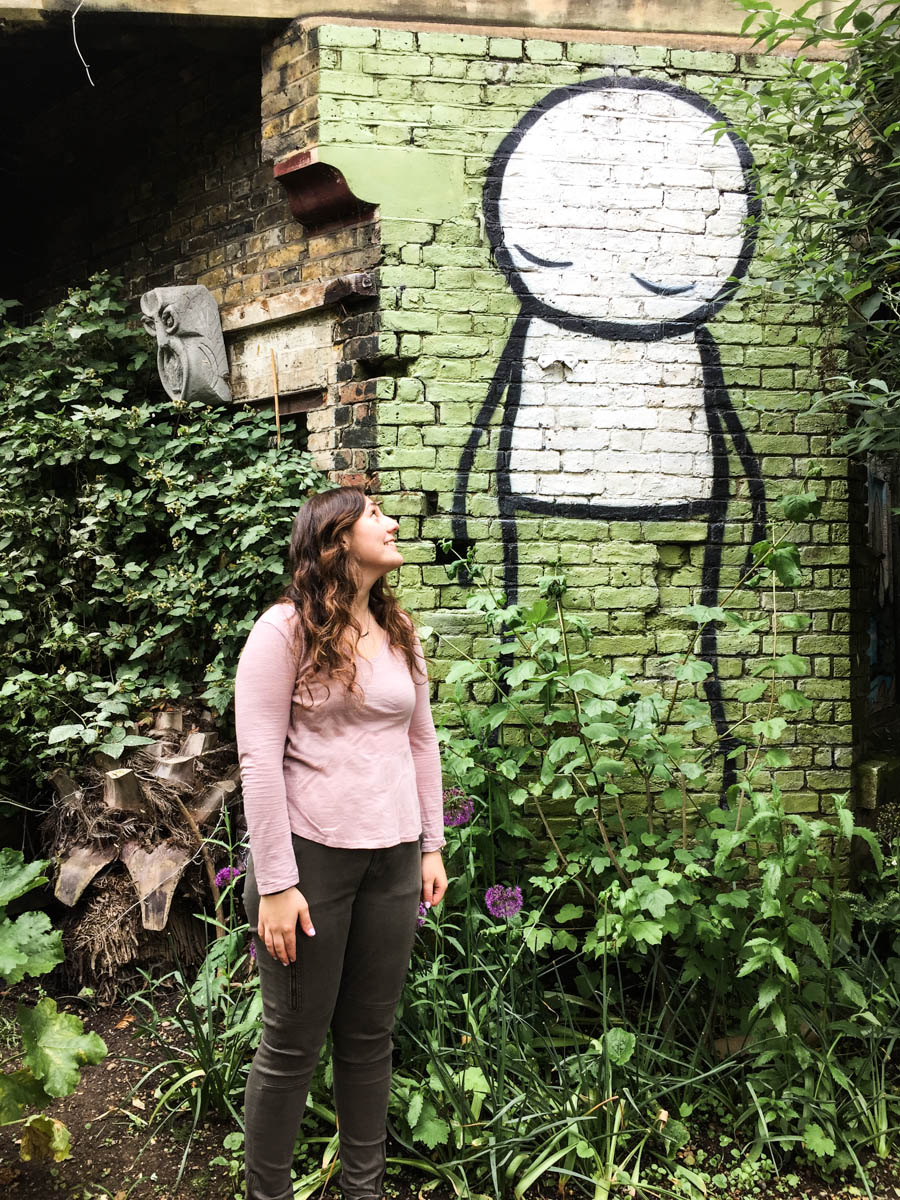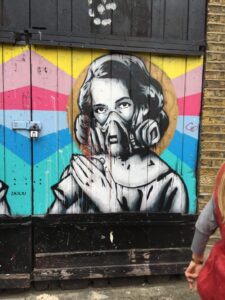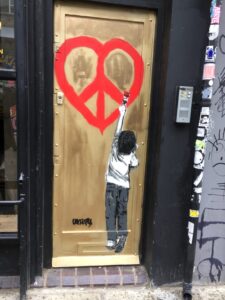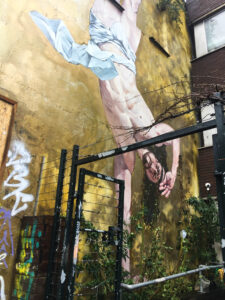Exploring London Through Street Art


In the spring semester of 2016, I studied abroad in London, England, a long way away from my home state of Texas.
I was fortunate enough to have been able to travel across the world with my family before this study abroad experience. We had even been to England on a previous trip. I love traveling, because I get to experience a new place and a new culture each time. However, all of my previous travels were relatively short; we never stayed in the same place for over a week. Being able to live in London for five months was such an amazing adventure. Because I was there for such a long time, I was really able to explore and get to know the city very well, in a way that I have not been able to before. As the weeks passed by, I began to notice things about the city that I might have missed on a quicker trip.
What Stood Out

One of the things that caught my eye was the amazing and extensive street art that is splashed on walls all across London. Of the cities I have lived in, I have never seen this level of street art. Aside from just appreciating the detail and beauty of the art, I became very interested in how the art got there, and what place it has in London’s culture.
How is this Possible?
One of the first questions that popped into my mind was are these paintings legal, and if not, what keeps them from being scraped off or painted over? I wondered if they were commissioned, or if the artists simply picked spots to paint without any permission. Aside from the multitude of pieces in London, I began to notice street art in other cities I visited during my time abroad elsewhere in Europe, including Berlin, Florence and Bristol.
I took pictures of nearly every piece of street art that I saw, and I began to do some research online to find out more about this phenomenon. While in London, I actually created a website to showcase the many pictures of street art I saw, as well as some articles about the phenomenon of street art and some artist information.
The Art’s Cultural Significance

I learned that some of these art pieces are commissioned, but that many others are still illegal and do sometimes get painted over.
Despite the removal of some, it is likely that their sheer numbers make it difficult for them all to be removed, especially with new ones being painted all the time.
It’s also possible that many are left up because the city has begun to recognize the cultural significance and appeal of this art. I think it is amazing that artists are able to display their work in this way. Many of the pieces are beautiful, unique, and thought- provoking, and add character to the city. It great way for artists to express themselves, and display their art, which may not be possible in more traditional art settings, and allows anyone walking by to see their work.
Street artists often use their large platform as a way to make social commentary, like Banksy, who is known for his controversial street art. This seems like it would give city governments even more reason to destroy paintings that are critical of the government.
However, many of these controversial pieces are still up for everyone to see. Because street artists are not confined to any art standards and often use paintings to speak their mind, the current art pieces are one way to gauge the feelings and opinions of the city’s residents.
The Problem with Public Art

This art is so popular that there are many street art tours, and there are even shops that sell shirts and magnets adorned with popular street art pieces. A current problem with this is that the street artists do not receive compensation for the sale of these products.
They are often not even listed as the artist, especially in instances when it is difficult to identify the artists for a particular piece. Many of the street art pieces are not signed, but because artists generally have distinct styles, a Google search can often lead to the name or at least the pseudonym of the artist. Many of these artists essentially display their art for free to the public.
However, they can gain a good reputation and respect among the street art community as well as the larger city community, and may be able to be paid for their art in the future.
I saw that street art is an ingrained part of the culture in London, and around Europe as well. I am definitely not used to seeing street art where I live, so I was especially enthralled and curious about what I saw on the street walls in London.
This is a different type of art, and allows for a different way of experiencing art. I am glad that street artists are rebellious and passionate there, because I feel that it adds lots of color and character to the city. This art gave me extra incentive to explore parts of the city that I had not yet been to, and helped widen my perspective of the culture of London.
Elizabeth Dobbin is a student at Rice University and studied abroad with IFSA in the King’s College London Partnership Program in England in Spring 2016.